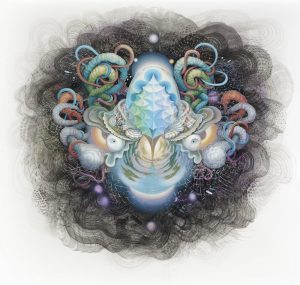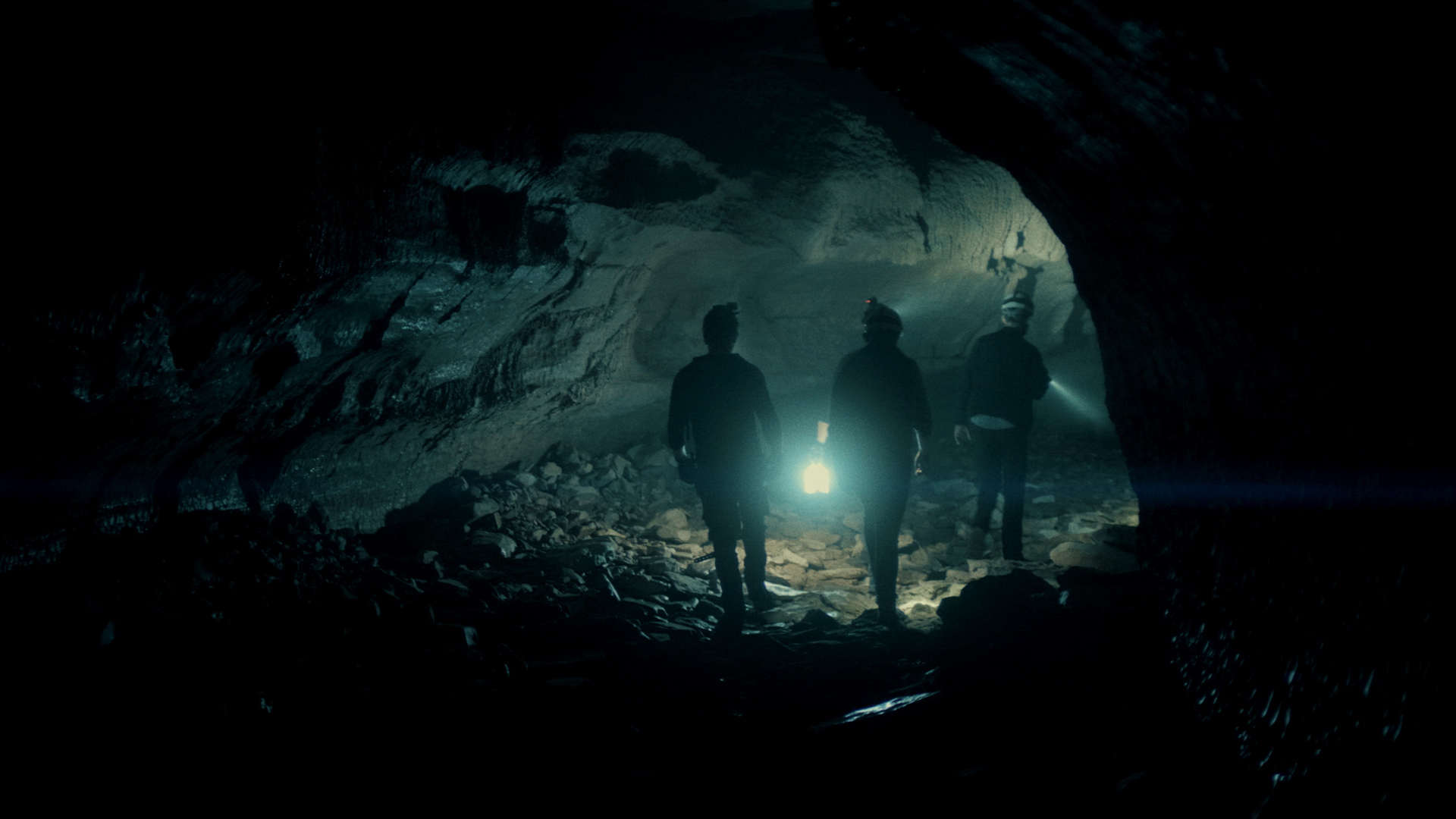
Tulpamancers: How the Spiritual Practices of Buddhist Monks Became a Play of Children
- January 3, 2018
- 0
by Anastasiia Shkuro
 It is widely believed this story has started from the social media. A couple of years ago the teenagers found themselves involved into creation of alternative multiple personalities. In the century of technologies there is no difficulty in making virtual friends that is going to use one language speaking with the Internet user.
It is widely believed this story has started from the social media. A couple of years ago the teenagers found themselves involved into creation of alternative multiple personalities. In the century of technologies there is no difficulty in making virtual friends that is going to use one language speaking with the Internet user.
Creature from the depth of the subconsciousness
Mary, 14, shared with me her discovery. In case one has been persuading himself for several days to get an imaginary friend, it appears in reality. Mary is convinced:
- Once you direct the power of your desire, in a while tulpa starts fulfilling your ambitions.
Even though I am quite skeptical, Mary tries to do her best in persuading me that there is nothing strange in creation of such imaginary personalities as tulpa. - My classmates created tulpa, and it helped them to pass exams with the playing colors.
Yet, I am convinced it is psychological factor. In case a child has not revised for an exam the confidence of having invisible allmighty assistant will help to succeed. It seems taking exam they are able to recall what they have heard on the lessons.
In the social media there are several groups dedicated to the new movement. One of them offers such a description: ‘Tulpa is the dearest thing in the world. It will never betray. On the opposite, it will always understand, listen to your problems, calm down and support’.
The further description throws off kilter:
‘One will be able to see, hear, touch, and smell the tulpa as well as any ordinary people. Tulpa is the caused hallucination from your mind, an absolutely sensible creature and assistant’. I remember myself having electronic games in the childhood that allowed to make a character. They needed caring and feeding. This character was young, then older, and, finally died. The short term included all the life cycle. It seems that the idea to create an artificial multiple personalities should be the part of the same story. However, how not to go out of control?
The adherents of the new movement are convinced: those who stand against the creation of tulpa are afraid of unknown space. Well, they must fling caution to the winds and let go all the obsolete views getting the access to the new sources. Yet, is it so safe for children mental system?
Are you friend or foe?
The organizers of social media groups are persuaded that a person who practices tulpa creation will be able to cope with the fear or other mental problems articulating positive affirmations. By the way, if tulpa does not work out and forgets the answer at the exam or gives wrong advice during the friends’ argument, it does not mean it is inable to act. The people who put forward ideas of tulpa claim: ‘It is not tulpa that is mute. It is you who is deaf’. If one person does not want to create an alternative personality, the teenagers call it ‘parrotry’. Time after time, the masterminds of this movement repeat: ‘The roots of fear are in the lack of knowledge’.
Some children who try to get on well with tulpa even argue with their imaginary characters. Ann, 12 years old, tells:
- Several days ago we had a blazing row. It seems I told some rude words but tulpa got offended. Though I apologized several times, it does not want to forgive me.
I get curious which interests are common among the kids? Looking through the profiles of girls in social media, I have noticed them reading groups likewise ‘Depressed and frustrated’. Some kids mull over the considerations that everything we think about is real. It appears this is the popular trend of positive thinking. Indeed, in this case the extremes turned out.
The root of the problem is hidden in the fragile consciousness of the teenagers. For instance, several young people who suffer from the unreciprocal love create tulpa copying it from the beloved person. Gina is 15 years old. She shares the love story that led her to the creation of an alternative personality: - I felt head over heels in love with some boy. But he does not love me at all! That’s why I found out a kind of decision and did a tulpa that looks like its prototype. I need this person so much but he does not want to have relationships with me and even refused to get a friendship. What to do? Tulpa saves me when I am in the depth of despair.
The imaginary friend: what do esoteric practices talk about it?
Initially, tulpa was created by Tibetan magicians. Then, representatives of other religions approved the art to speak with the spirits. For instance, anthropologist from Stanford University Tanya Luhrmann studied the lifestyle of Christians who gained an experience of ‘talking to God’. The modern tulpamancers read the investigations of Tanya Luhrmann. Thus, now they claim that in the process of the self-persuasion the person feels as if he got a strong spiritual experience. He seems to immerse into the netherworld. The longer the training is, the brighter the effect becomes.
For instance, several kids wrote in their diaries that firstly tulpa followed the will of its owner. Then, it went out of control and started its own life.
Tanya Luhrmann described the situation that was likely to be similar to the feelings experienced by children: - I went to some woman, and she said that if I wanted to understand something I should drink coffee with God. She admitted to doing it every day. She drinks coffee, discuss problems, shares her feelings. Afterwards, she felt how God touched her and this experience became visual, as well.
Tulpamancy is actively supported by Western science. For instance, the anthropologist Samuel Weiser claimed that the creation of tulpa is the embodiment of an ancient principle ‘make the strange familiar and make familiar things strange’. Such an abstract long-winded phrase allows to take any things and approve its unusual usage, does not it?
Samuel Weiser tried to prove that creation of alternative personalities have nothing in common with the mental disorders. He put forward an example of wild children who suffered from psychological disabilities till did not let it go. But this example could not be considered as rightful. Firstly, it shows the ancient tribe with the testimonials that could be referred to the mythology. Secondly, many children who create tulpa do it not to get rid of the mental problems but simply following a fashionable movement. Certainly, it might cause the serious mental disease. Unfortunately, the organizers of social media networks do not warn about that.
Finally, we decided to consult with the doctor-psychotherapist, Candidate of Medical Science, consulting psychologist, Elena Strokova:
- The child who creates tulpa losses critics. Actually, it is the purpose to see, feel, and hear the result of this work. If the process has gone too far, a kid who created tulpa lives in the continual communication with it. It is possible to talk and argue with tulpa what is perceived painfully because the result is estimated as the living creature with its mind, opinion, and points of view. However, not always does the tulpa make a way towards the psychosis. If the teenagers has the normal growth, he will not need imaginary friends quite soon, and the consequences will not be significant. Well, not every personality will create the tulpa. It should be the personality with the features that are tend to have endogenous processes or disorders of the mature personality.

